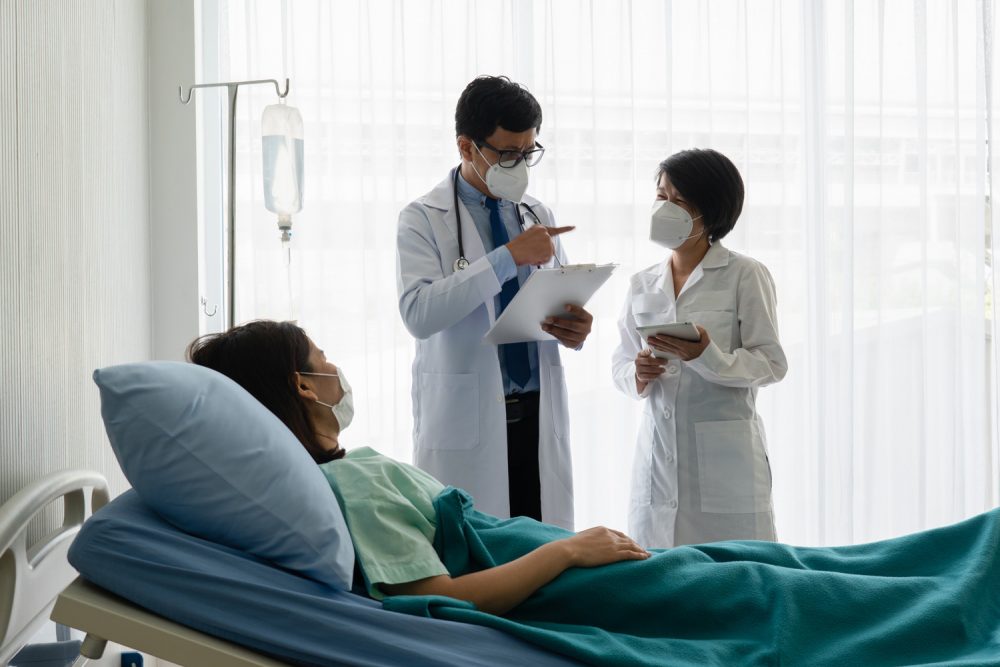Advertisment
Simulation in medical school helps prepare doctors to care for dying patients

Simulated experience of caring for a dying patient and their family can improve the confidence and preparedness of medical students to provide such care, according to a new study by Brighton and Sussex Medical School (BSMS) published in the BMJ Journal of Supportive and Palliative Care.
Immediately after the simulations were completed, student confidence almost doubled (98% increase) in relation to communicating with dying patients and their family. Confidence in patient management increased by two-thirds (66.2%), and increased by almost one half (48.4%) for multidisciplinary working. These increases in confidence were sustained when measured again six months later.
Qualitative measurements of preparedness demonstrated that students welcomed greater exposure to hands-on teaching on the care of dying patients, and felt better prepared to provide this care following the simulated experience.
Lead author Dr Geoff Wells, Honorary Clinical Lecturer at BSMS and ST6 Registrar in Palliative Medicine at University Hospitals Sussex NHS Trust, said: “Foundation Year 1 trainees, straight out of medical school, can feel anxious, poorly prepared and unconfident in providing care for dying patients.
“Our study showed that after a series of simulation sessions medical students reported a marked increase in confidence, which was maintained six months later.”
Year 4 students at BSMS took part in eight half-day simulation sessions, which used a hi-fidelity mannikin (with pulse, breathing sounds and chest movements) to represent an unconscious, dying patient and an actor to play a family member. A range of scenarios were played out, including some in which the patient died.
Dr Wells added: “We use simulation to teach many areas of medicine, particularly in managing acute emergencies, and this is known to be an effective teaching tool. As with an emergency situation, with a dying patient you also have a time limit to provide appropriate and competent clinical care, with a single opportunity to get it right – so there are parallels between the two situations.
“Ultimately, we believe developing simulation in palliative care teaching could reduce distress among junior doctors, with the patient dying comfortably, and with any previously unmet palliative care needs having been addressed.”
Following the success of this study, these simulations are now being incorporated into the BSMS undergraduate curriculum so that all students will have the opportunity to learn from simulated care of the dying scenarios. This will also provide many opportunities for further study with much larger participant numbers.
Simulated experience of caring for a dying patient and their family can improve the confidence and preparedness of medical students to provide such care, according to a new study by Brighton and Sussex Medical School (BSMS) published in the BMJ Journal of Supportive and Palliative Care.
Immediately after the simulations were completed, student confidence almost doubled (98% increase) in relation to communicating with dying patients and their family. Confidence in patient management increased by two-thirds (66.2%), and increased by almost one half (48.4%) for multidisciplinary working. These increases in confidence were sustained when measured again six months later.
Qualitative measurements of preparedness demonstrated that students welcomed greater exposure to hands-on teaching on the care of dying patients, and felt better prepared to provide this care following the simulated experience.
Lead author Dr Geoff Wells, Honorary Clinical Lecturer at BSMS and ST6 Registrar in Palliative Medicine at University Hospitals Sussex NHS Trust, said: “Foundation Year 1 trainees, straight out of medical school, can feel anxious, poorly prepared and unconfident in providing care for dying patients.
“Our study showed that after a series of simulation sessions medical students reported a marked increase in confidence, which was maintained six months later.”
Year 4 students at BSMS took part in eight half-day simulation sessions, which used a hi-fidelity mannikin (with pulse, breathing sounds and chest movements) to represent an unconscious, dying patient and an actor to play a family member. A range of scenarios were played out, including some in which the patient died.
Dr Wells added: “We use simulation to teach many areas of medicine, particularly in managing acute emergencies, and this is known to be an effective teaching tool. As with an emergency situation, with a dying patient you also have a time limit to provide appropriate and competent clinical care, with a single opportunity to get it right – so there are parallels between the two situations.
“Ultimately, we believe developing simulation in palliative care teaching could reduce distress among junior doctors, with the patient dying comfortably, and with any previously unmet palliative care needs having been addressed.”
Following the success of this study, these simulations are now being incorporated into the BSMS undergraduate curriculum so that all students will have the opportunity to learn from simulated care of the dying scenarios. This will also provide many opportunities for further study with much larger participant numbers.





